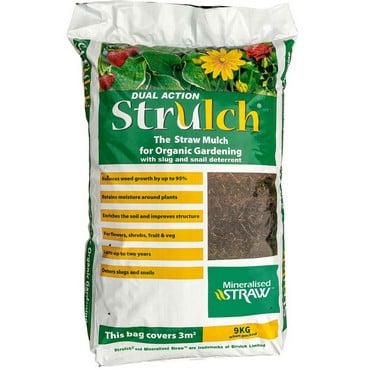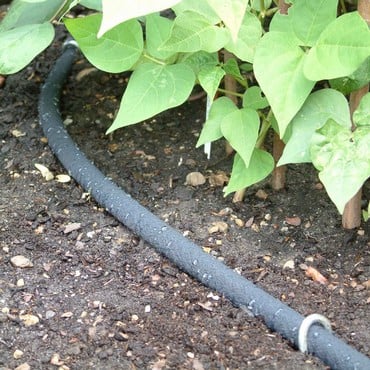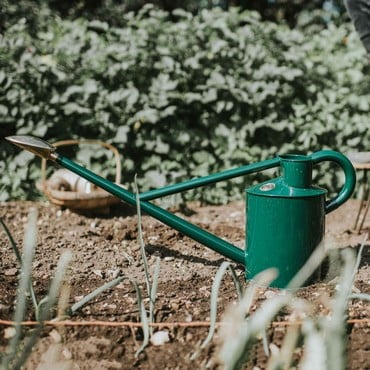Flaming June is living up to its reputation this year with wall-to-wall sunshine for most of the month. As I write we have had no rainfall for four weeks and the scorching sun and drying winds of a heatwave are causing challenges all around the garden. 2018 has certainly been a year of extreme weather so far!
Our garden is on the east coast of east Anglia which is traditionally one of the driest area of the country so we are used to growing crops with very little rain, but this year we find ourselves gardening in drought conditions. Our water butts, overflowing just a couple of months ago, are now completely empty. We have soaker hoses and irrigation set up on some of our beds which are turned on overnight and these are working effectively. Hoses are strategically placed around the garden for watering pots and new plantings. But for me there are times when only a watering can will do. When I am administering the weekly feeds, they need measuring into a watering can before watering the pot or crop in question. My penance for a preference for a watering can? Many hours in the early morning carrying them from pot to precious pot!
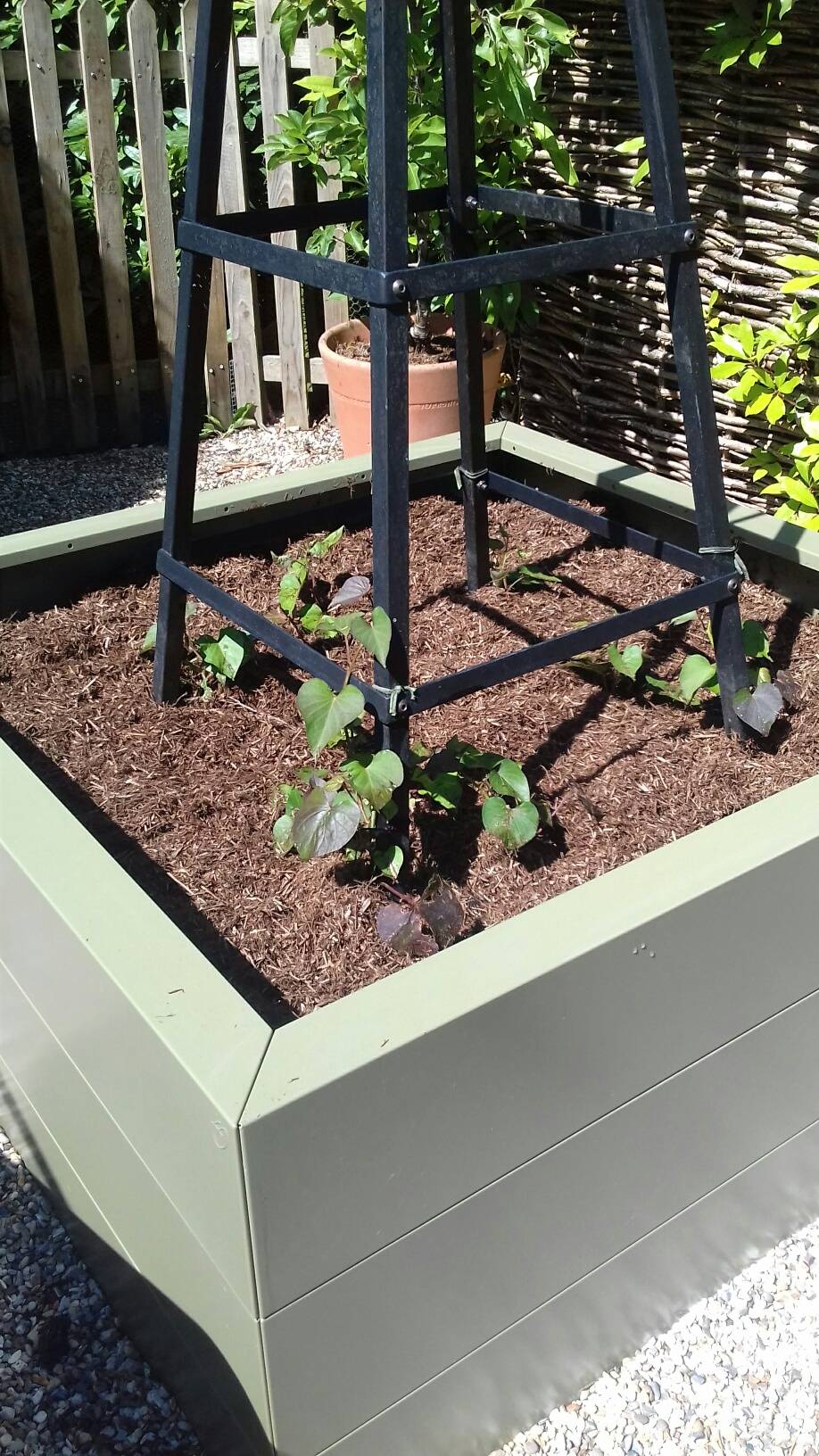 There are measures we have taken to prevent the need for watering and to help plants cope in the extremely hot weather. Mulching the soil after watering stops the water from evaporating and keep the roots of plants cool. Grass clippings (if your grass is growing!) and cardboard make great mulches, but if like us you like your garden to look a little more manicured, strulch makes a great water conserving mulch and has the added benefit of preventing weeds too. Other crops are grown through landscape fabric and again this helps to prevent weeds and helps keep the soil moist. Where strulch can be used around established plants, landscape fabric is great for any new plantings you may be making. We have just used some to plant a crop of sweet potatoes through. For thirsty plants such as courgettes and squash, we have plastic plant pots sunk in the soil next to the plant and water into it. This makes sure the water goes straight to the roots of the plant rather than sitting on the soil where it can dry out fast in hot sun or drying winds. Planting individual plants such as outdoor tomatoes into plant halos has the same effect.
There are measures we have taken to prevent the need for watering and to help plants cope in the extremely hot weather. Mulching the soil after watering stops the water from evaporating and keep the roots of plants cool. Grass clippings (if your grass is growing!) and cardboard make great mulches, but if like us you like your garden to look a little more manicured, strulch makes a great water conserving mulch and has the added benefit of preventing weeds too. Other crops are grown through landscape fabric and again this helps to prevent weeds and helps keep the soil moist. Where strulch can be used around established plants, landscape fabric is great for any new plantings you may be making. We have just used some to plant a crop of sweet potatoes through. For thirsty plants such as courgettes and squash, we have plastic plant pots sunk in the soil next to the plant and water into it. This makes sure the water goes straight to the roots of the plant rather than sitting on the soil where it can dry out fast in hot sun or drying winds. Planting individual plants such as outdoor tomatoes into plant halos has the same effect.
At the moment we are holding back on planting any new large plants in the garden because of the weather. We have a few hedge plants ready to fill some gaps around the garden. To plant them now would mean they would need to be kept very well-watered and we would risk losing them through stress. We will let them remain in the pots placed in the shade near a water source to make it easier to care for them and plant them out when conditions change.
One crop that will really enjoy the heat and sunshine are sweet potatoes. Early in the month they were planted in a metal raised bed to be trained up a pyramid obelisk. As it is such an impressive crop to look at, we always make sure to plant them where they can be seen when entering the garden. So many visitors have commented on how lovely they look over the past few years. Other than preparation, they take very little looking after apart from a good watering and feed once a week and have rewarded us year upon year with a lovely crop of large tubers. It is a crop I would thoroughly recommend for anyone to try. The soil in the raised bed has been enriched with lashings of well-rotted manure as sweet potatoes are hungry feeders and like a fertile soil. The soil was then topped with a layer of black landscape fabric. This helps to keep the soil warm and moist. The obelisk is then placed onto the bed before planting the little slips out all around the base before being watered in. They will then be fed weekly with liquid seaweed and tied in to the obelisk as they grow.
Inside the greenhouse the cucumbers and tomatoes are also enjoying the sunshine and are 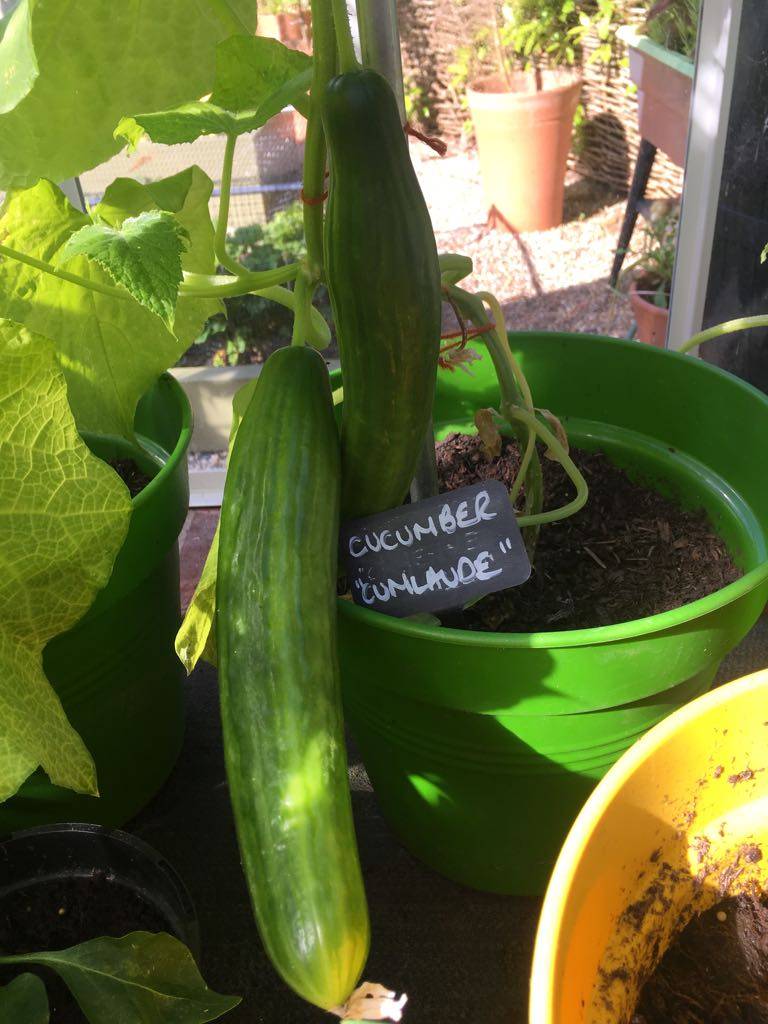 scrambling up their supports and we have just harvested our first cucumber. We are tying the plants into their supports as they grow. The tomatoes will be pinched out once they have set 6 trusses of fruit, or reached the greenhouse roof, whichever comes first! The cucumbers will be trained up their supports and then along the roof bars of the greenhouse. This provides shade for the plants underneath them and allows the later summer fruits to hang down for easy picking; although we usually need a step ladder to reach them!
scrambling up their supports and we have just harvested our first cucumber. We are tying the plants into their supports as they grow. The tomatoes will be pinched out once they have set 6 trusses of fruit, or reached the greenhouse roof, whichever comes first! The cucumbers will be trained up their supports and then along the roof bars of the greenhouse. This provides shade for the plants underneath them and allows the later summer fruits to hang down for easy picking; although we usually need a step ladder to reach them!
Unfortunately, the weeds seem to be revelling in the heatwave too and are popping up all over the garden literally growing overnight. It’s important to keep on top of them while they are small and before they have the chance to set seed. In some parts of the garden, where plants are closely packed, a handfork, trug and a kneeler are my weapons of choice, but in the kitchen garden or our herb parterre where there are bigger spaces to clear, my favourite tool is the royal dutch hoe. It makes light work of small weeds that can be left to die on the soil in the sun. Carried out regularly, hoeing will make sure the weeds are kept at bay and it’s a lot easier on the back than hand-weeding!
Our apple and pear trees are positively smothered in tiny fruits and nature is currently thinning out the excess fruits on the trees by way of the June drop. In the next week or so we will emulate mother nature by picking off further fruits to leave the largest two on any spur. As painful as this is, it is necessary if we are to get good sized fruits and to protect the branches from breaking under the weight. We will also carry this out on our peach, apricot and nectarine trees. Last year was our first harvest for these and we were a little light handed with our thinning, particularly on our nectarines. Consequently, we ended up with a crop of small plum sized nectarines. This year we will be tougher!
Our beans have already reached the top of their supports and are flowering happily in the hot sunshine. They need plenty of water to keep them cropping, as do the squash plants that we have growing around their feet. The courgettes are also basking in the sun, enjoying a regular water and are covered in flowers. All around the garden there is much promise of a bumper harvest ahead.
Elsewhere, the summer harvest is well underway. We have started picking strawberries which are deliciously juicy eaten fresh from the plant warmed by the sun. Occasionally a bowlful manages to make it to the kitchen! We have also harvested our redcurrants and these are now in the kitchen ready to make delicious redcurrant jelly. Currants are such an easy crop to grow, requiring very little maintenance and attention, and always provide us with a huge crop. Our sugarsnap peas are cropping well, as is our early sprouting broccoli. The spinach is still providing us with lots of lush leaves but is showing signs of bolting where we planted it in full sun in late winter. A second sowing has been planted out in a shadier spot where it will be happier over the summer and less likely to bolt. We have also just planted out new salad plants where our existing plants had gone over and will be sowing more in the next week or so to keep a succession of salad crops throughout the season.
Not all of our harvesting has been successful and this month we have been hit by a huge disaster. We lifted a couple of our early garlic to see if they were ready for harvest only to discover what looks like white rot. Further investigation of the remaining garlic plants and their neighbouring onions has shown a devastating loss of the most of the crop. There are a handful of onions that we will be able to clean up and eat but the rest will need to be burned. We sent samples off to the RHS and have heard back that the garlic has indeed got white rot which means that members of the allium family cannot be grown in the soil for at least 5 years. The onions were suffering from fusarum basal rot which is just as bad news.
Our plan going forward will be to grow these crops in raised beds where we can replace the soil regularly with ‘clean’ soil and this is what we will be doing with our leeks this week. They were sowed alongside the onions so we want to remove them from the affected soil as soon as possible to avoid them being attacked. We will dig them up, trim the roots and then plant them into a raised bed where we can hopefully quarantine them. Raised beds are great for being able to control the soil you are growing plants into in situations like this and we are keeping our fingers tightly crossed that we can at least have leeks this winter!
Here are some of the jobs we’ve got planned for July in Stephanie’s Kitchen Garden:
- Continue making successional sowings of salads.
- Hoe off weeds regularly to stop them taking hold.
- Continue watering!
We’re always here to offer help and support. Go to the Ask the Expert section on our website and email horticultural advisor Jo Blackwell with your queries and she’ll do her best to help.
We’re busy tweeting about all things Harrod Horticultural – what we’re doing, special offers, gardening tips and advice and you can always use Twitter or Facebook to get in touch with us as well. With our webteam manning the Tweet desks and Facebook site, you can be sure you will get the best service we can offer.
Our 108 page catalogue is out now and packed full of gardening ideas and products to solve the problems every gardener faces, plus plenty more seasonal ideas for harvesting, storage and preserving.


















